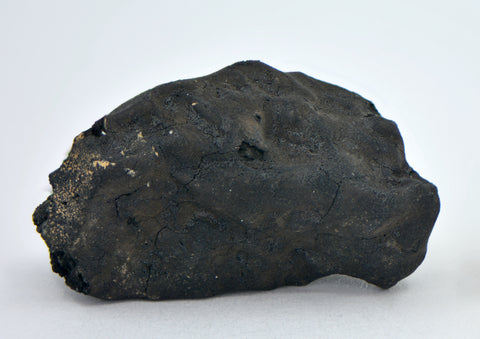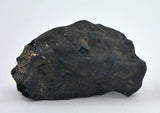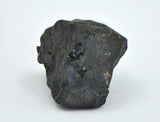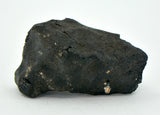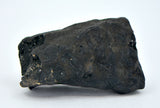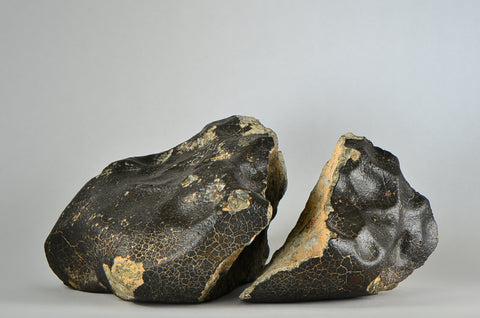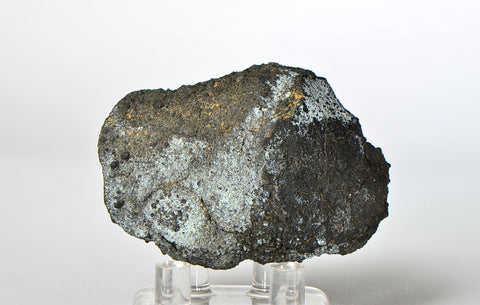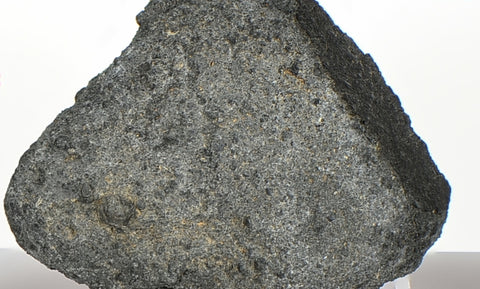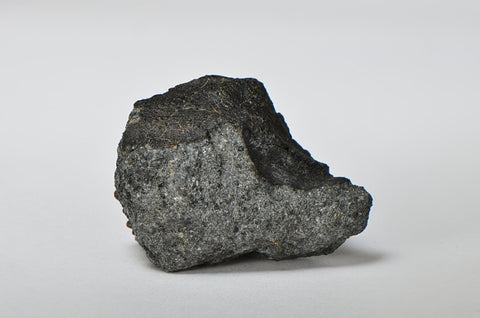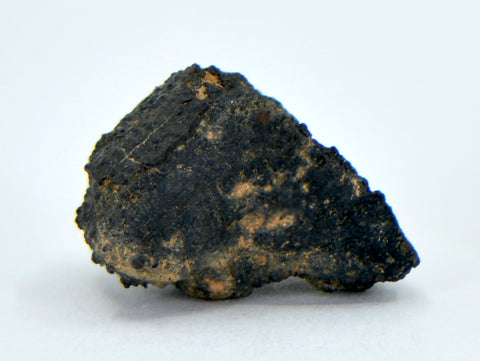6.9g C2-ung TARDA Carbonaceous Chondrite Meteorite

On Offer: 6.9g Tarda carbonaceous chondrite C2-ung meteorite from Tarda, Morocco.
Description: 6.9 gram Tarda C2 Ungrouped carbonaceous chondrite meteorite with fresh crust.
Official Name: Tarda
Type: Carbonaceous Chondrite - C2-ung
Observed fall: Yes, confirmed fall
Date of fall: August, 25, 2020
Country: Morocco
What you get: 6.9g Tarda C2-ung Carbonaceous Chondrite Meteorite Specimen as shown, Membrane Storage/Display Box, & signed Certificate of Authenticity.
I offer a 100% no questions asked 30 day return policy.
| Tarda | |||||||||||||||||||||||||||||||||||||
|---|---|---|---|---|---|---|---|---|---|---|---|---|---|---|---|---|---|---|---|---|---|---|---|---|---|---|---|---|---|---|---|---|---|---|---|---|---|
| Basic information |
Name: Tarda This is an OFFICIAL meteorite name. Abbreviation: There is no official abbreviation for this meteorite. Observed fall: Yes, confirmed fall Year fell: 2020 Country: Morocco Mass:  4 kg 4 kg |
||||||||||||||||||||||||||||||||||||
| Classification history: |
This is 1 of 23 approved meteorites classified as C2-ung. |
||||||||||||||||||||||||||||||||||||
| Comments: | Approved 14 Oct 2020 | ||||||||||||||||||||||||||||||||||||
Writeup |
Writeup from MB 109:
Tarda 31° 49' 35"N, 4° 40' 46"W Morocco Confirmed fall: 2020 Classification: Carbonaceous chondrite (C2, ungrouped) History: (H. Chennaoui Aoudjehane, FSAC, ATTARIK Foundation: A. Aaronson) On Tuesday, 25 August 2020, around 2:30 pm Moroccan time (GMT+1) a fireball was widely witnessed by people in southern Morocco from Alnif, Zagora, Tazarine, and Rich. The fireball trajectory was from the SW to NE. A search was immediately undertaken by local residents and meteorite hunters between Goulmima and Errachidia. Hundreds of people began searching on the same day, and the first piece was found the following day by Alalou Youssef close to his village of Tarda. The fall location is crossed by the national road linking Ouarzazate to Errachidia, and because of the easy access thousands of people soon traveled to the area. National TV channels Al Oula and 2M recorded the activity. A field mission was organized to the fall site on 27 and 28 August 2020, with Dr Mohamed Aoudjehane, Prof. Faouziya Haissen and Prof. Hasnaa Chennaoui (members of the board of directors of ATTARIK Foundation), with the support of Prof. Hicham Si Mhamdi (Faculty of Sciences, Errachidia), Adam Aaronson and members of the Moroccan Association of Meteorites (Ahmed Bouferra, Mohamed and Zaid El Guireh). Several eyewitnesses from areas up to 150 km away were interviewed, and reported three " of a bright yellow, barrel-sized fireball with green edges. The meteor was followed by a thick trail of white smoke that remained suspended for several seconds. The fireball was reported to release little pieces around its edges, witnesses said the fireball was accompanied by a whistle, followed by multiple detonations. One eyewitness reported an almost vertical trajectory. Thousands of small, mostly complete stones were collected ranging from only a few milligrams to 99 g. Many pieces were recovered by hunters using magnets. The strewn field is about 3 km long and situated ~10 km east of Tarda centered at 31.8265°N, 4.6794°W. Physical characteristics: Hundreds of small to medium-sized fusion crusted stones ranging from 0.1 g to 99 g. The majority of the fusion-crusted stones are <1 g. Some flight-oriented stones show a blue iridescence on their trailing edge, similar to that observed with Aguas Zarcas. Many stones shattered upon impact with the ground. The stones have low density, are somewhat friable, and are particularly susceptible to moisture, and rapidly slake in contact with water or alcohol. Freshly picked up stones were said to have a charcoal-like odor. Small fragments crushed in water emit a powerful tar-like odor. The interiors of the stones are dull black with dispersed white or light-colored grains or clasts (up to ~1 mm in size). Magnetic susceptibility log χ (× 10-9 m3/kg) = 4.99, 4.83, 5.03 (A. Irving, UWS), 4.80 (H. Chennaoui Aoudjehane, FSAC), 4.96 (D. Sheikh, FSU); average 4.92±0.10, n=5. Petrography: (A. Irving, UWS; P. Carpenter, WUSL; L. Garvie, ASU; D. Sheikh, FSU) Optical and electron microprobe observations of three fragments in polished thin sections reveal a matrix-rich breccia containing small chondrules (granular, BO) and chondrule fragments, very fine grained AOA, grains of forsterite (exhibiting slight undulose extinction) and other clasts set in a dominant fine-grained matrix (~80 vol.%, opaque in thin section). Chondrule sizes measured in two thin sections: 310±150 µm, n=10; 450±200 µm, n=5. No CAIs were identified. The dominant chondrule phase is forsterite (but spinel is present in two examples), and some are mantled by forsterite dust or exhibit partial replacement by Fe-Mn-dolomite, siderite or phyllosilicate material. A single igneous achondrite clast with subophitic texture was observed, and consists predominantly (~75 vol.%) of laths of twinned anorthite with subordinate forsterite, enstatite and minor diopside. Electron microprobe surveys of thin sections and powder X-ray diffraction studies of several ~20 mg fragments show that the matrix is dominated by phyllosilicates, with lesser magnetite, pyrrhotite, pentlandite, troilite, carbonates (Fe-Mn-dolomite, Mg-rich siderite and siderite), and olivine. The phyllosilicates show broad basal reflections at 14.7 Å and 7.4 Å, consistent with smectite and serpentine or interstratified serpentine/smectite, respectively. No reflections for sulfates were recognized. Magnetite (<20 μm) is scattered throughout the sample in the form of framboids, platelets, and individual spherules; other accessory phases identified in the matrix by EPMA are troilite, Ni-bearing pyrrhotite, chromite and very rare kamacite. Geochemistry: (D. Sheikh, FSU;P. Carpenter, WUSL): Forsterite (Fa1.0±0.6, range Fa0.2-2.9; CaO wt% = 0.2±0.1, range 0.1-0.4; Cr2O3 wt% = 0.51±0.17, range 0.11-0.91; FeO/MnO =10±6, range 3-24; n=35), ferroan olivine (Fa26.5±1.6, range Fa24.8-28.0; CaO wt% =0.2±0.1, range 0.2-0.3; Cr2O3 wt% = 0.44±0.06, range 0.40-0.51; FeO/MnO = 91±7, range 88-99; n=3). Achondrite clast: anorthite (An99.7±0.4, range An99.4-99.9, n=2), forsterite (Fa1.1, FeO/MnO = 7, n=1), enstatite (Fs1.1±0.1 Wo3.2±0.5, range Fs1.0-1.2 Wo2.7-3.7, FeO/MnO = 3, n=3), diopside (Fs1.7 Wo44.0, FeO/MnO = 3, n=1). Bulk composition of the matrix measured using 1 µm-sized beam (in wt%): SiO2= 30.5±6.1, P2O5= 0.1±0.1, Cr2O3= 0.4±0.1, Na2O= 1.0±0.2, TiO2= 0.1±0.1, Al2O3= 2.1±0.5, FeO= 20.2±3.2, MnO= 0.3±0.3, MgO= 19.3±1.8, CaO= 0.5±0.5, K2O= 0.1±0.1, NiO=2.0±1.0, S= 3.5±1.1, Sum 79.8±6.0, n=26. Oxygen isotopes (K. Ziegler, UNM) (linearized, all per mil relative to V-SMOW, TFL slope=0.528): A total of 7 untreated (i.e., no acid-wash) fragments were analyzed by laser fluorination. Sample weights for each measurement were between 2.0 and 4.7 mg. δ18O = 21.971, 17.924, 15.943, 20.842, 16.434, 17.034, 20.607; δ17O = 11.423, 9.124, 7.975, 10.613, 8.277, 8.859, 10.779; Δ17O = -0.178, -0.340, -0.443, -0.391, -0.401, -0.135, -0.102. Classification: (C. Agee, UNM; K. Ziegler, UNM; A. Irving, UWS; L. Garvie, ASU; D. Sheikh, FSU; P. Carpenter, WUSL; H. Chennaoui Aoudjehane, FSAC; M. Zolensky, JSC; P. Schmitt-Kopplin, HZM) Carbonaceous chondrite (C2-ungrouped). The bulk mineralogy is consistent with a petrologic grade 2, based on the predominance of smectite and serpentine together with the presence of anhydrous mafic silicates, AOA, and chondrules. The oxygen isotopes give a bimodal distribution of the δ18O-values, with one group having values somewhat like those of the CI chondrites, and the other group like values for the Yamato-type (CY) carbonaceous chondrites (King et al., 2019). However, Δ17O values are lower than those for CI and CY chondrites, and plot below the TFL. These isotopic values do not overlap with those of any established carbonaceous chondrite group, hence the ungrouped designation. Specimens: 18.4 g including one polished thin section and one polished thick section at UWB; 21g and one polished thin section at UNM; 7 g provided by A. Aaronson and 6 g provided by J. Redelsperger at FSAC; 20 g at the Ministry of Energy, Mines and Environment, Rabat, Morocco provided by A. Aaronson; total 628 g with A. Aaronson (including 99 g, 82.4 g and 52.6 g stones); 540 g with M. Farmer and A. Karl, 260 g with J. Poblador; 480 g with D. Dickens; 145 g with M. Oulkouch; 146 g with J. Redelsperger; 31 g with B. Hoefnagels. |
||||||||||||||||||||||||||||||||||||
| Data from: MB109 Table 0 Line 0: |
|
||||||||||||||||||||||||||||||||||||
We Also Recommend

